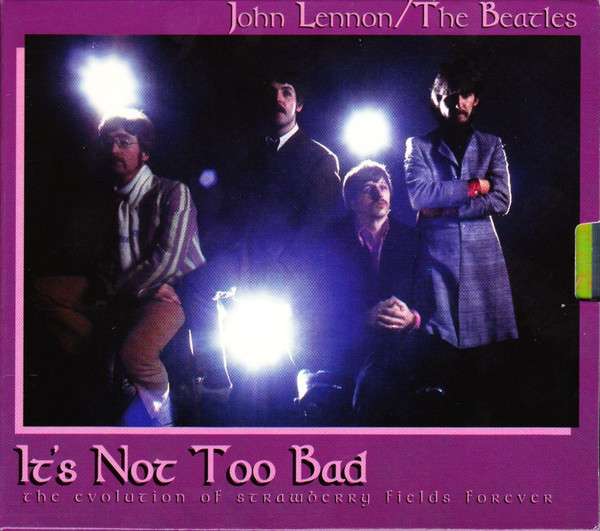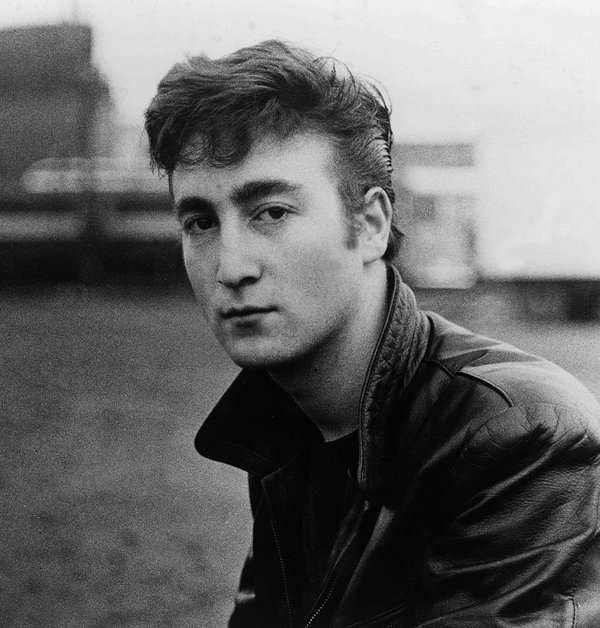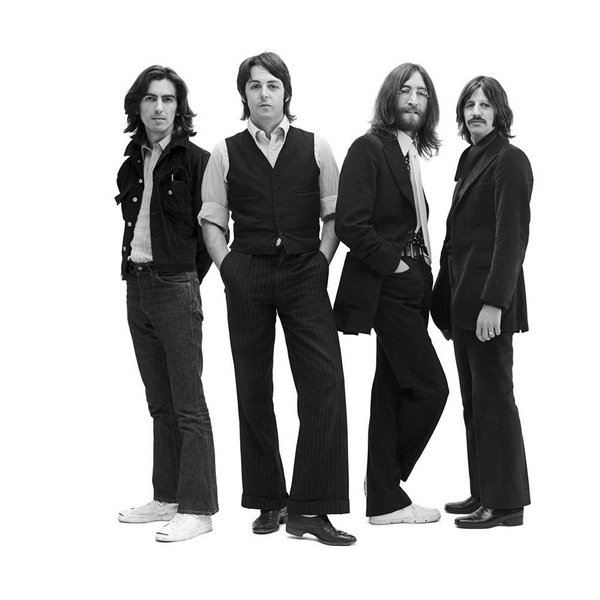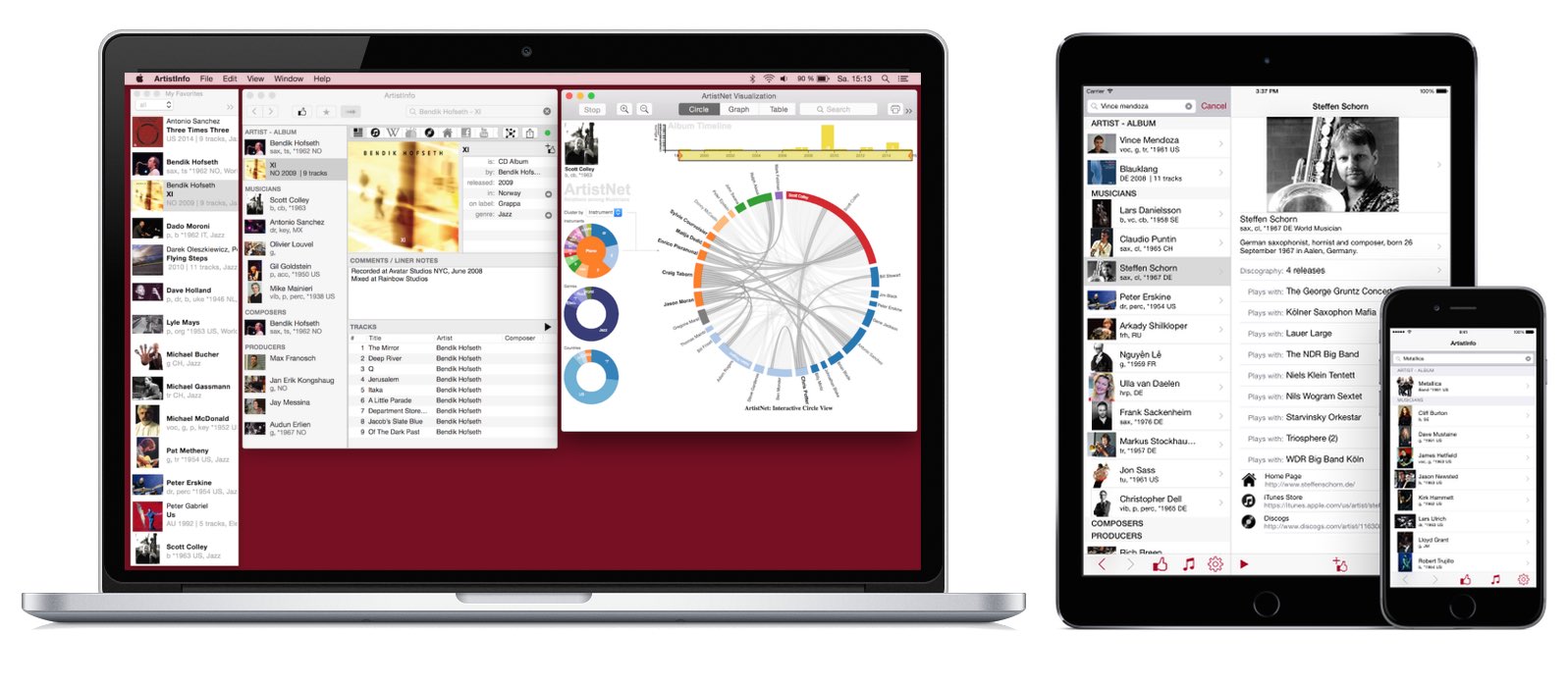
John Lennon / The Beatles
It's Not Too Bad - The Evolution Of Strawberry Fields Forever
Album 1997 on Pegboy label
Rock
From the other side of Penny Lane come these recordings of unparalleled historical importance! For the first time, collectors can trace the complete evolution of the Beatles' paramount release - "Strawberry Fields Forever". This collection includes John Lennon's earliest composing tapes, multi-tracked home demos, and unbelievable studio outtakes - all presented in the most complete and sonically stunning quality to date! Together with rare photographs and authoritative liner notes, this is one package that no fan of popular music can do without! "I have an original tape of it around somewhere. Of how it sounded before it became the sort of psychedelic-sounding song it became on record." John Lennon - September 1980 Here it is! John's complete composing work tape, offering the listener a unique insight into the genesis of "Strawberry Fields Forever," arguably the pivotal point in the Beatles' career. Coupling these home recordings with a demonstrative sampling of the EMI session tapes, this collection offers an unparalleled perspective of the evolution of "Strawberry Fields Forever" - from conception to release. It is an outlook unavailable for any other song in the Beatles' canon! One can actually hear the composition taking form, and aurally witness John's modus operandi in action! Many have theorized on the importance and effect of this composition on the Beatles' career, not to mention popular music as a whole. Supposals range from the accurate to the absurd, but they all have one thing in common - they aren't much fun to read! As Mr. Lennon himself once said, "Writing about music is like talking about fucking." So rather than wax prophetic about the "drooping appoggiatura" or the "sinister distortions of the instrumental sonorities", I'd like to present more of a technical history of the recordings and the events with surrounded them. Listeners who are interested in the inspiration behind the composition should forsake the essays, and search out the transcripts of John's marathon interview with David Sheff for Playboy magazine. The inspiration goes deeper than the image of the gothic orphanage, once visible from the now famous gates. THE SANTA ISABEL DEMOS The story begins while John was on location in Spain, filming 'How I Won The War' with producer/director Richard Lester. It was during these early weeks of Autumn, 1966, while temporarily residing in the tiny valley village of Santa Isabel, that John's new composition began to take shape. (Although some have erroneously attributed its impetus from a few notes played by John on a Hohner mouth organ during the Beatles' stay at New York City's Plaza Hotel in February, 1964!) The first section of the tape finds John alone with his nylon-stringed classical guitar, which has been drastically de-tuned to accommodate his vocal range. The ambiance and instrumentation are also reminiscent of his earlier demos for 'She Said She Said.' After a few moments of warming up with a decidedly 'Paperback Writer-esque' lick, John switches off the portable tape recorder, then returns with the first of six attempts at "It's Not Too Bad". At this stage, only the second verse exists, and in a lyrically incomplete stage at that. Two takes are recorded initially, both consisting of the sole verse sung repeatedly. After a seemingly brief pause, John returns with the verse completed and continues to polish the meter with each of the two performances that follow. In the fourth and final of these close-miked passes, a skeletal version of the chorus is first introduced. After some off mic composing has taken place, John resumes recording, this time taking advantage of the acoustical properties found in the bath. The two "distant" takes show considerable progress, with part of the third verse and a nearly completed chorus having been added. The acoustic demos concluded with a brief snatch recorded at another sitting, of John polishing a portion of the second verse. There is a possibility that this snippet is the remnant of a previous sessions that was spooled back and recorded over. THE KENWOOD DEMOS The next batch of home demos was recorded in the two week interim between John's return from Spain on November 7th and the Beatle's return to the studio on November 24th. Once John was ensconced in his home studio, tucked away in the upstairs loft at Kenwood, he was able to experiment with a wider range of instrumentation and production techniques. Appearing on this tape is the first evidence of John's primitive "sound on sound" recording technique. To achieve these "overdubs," John would play back a previously recorded performance through an amplified speaker, and record the ambient song along with a new live performance (the overdub) onto a second tape machine. He utilized this technique as late as the 'Double Fantasy' pre-production recordings some fourteen years later. While effective at capturing multiple Lennons, the technique was horrific from a technical standpoint, exponentially degrading the original performance with each "overdub"! The reel presented in this segment consists of John's overdubs onto another series of home demos: one instrumental, one with vocal, both replete with false starts. Since John was not utilizing true "multi-track" technology, these undubbed performances existed on a separate reel and are not included here. In addition, one must realize that these recordings are work tapes. They are the rough notes used to realize the final objective: an accurate demo recording. The fragmentary nature of these recordings is akin to the writer's overflowing waste bin of discarded and half-finished ideas. After a few attempts at rehearsing and adding some fumbling guitar flourishes to the instrumental demo, John moves on. He double tracks his lead vocal onto the other pre-recorded take, which still lacks the first verse. After a handful of technical interruptions, John abandons these recordings and starts anew on his Epiphone Casino. It is in this composing sequence that the melody and lyric finally gel. During these performances, an unknown individual is present, most likely a musical associate judging from the comments to which John passes. By this time the composition has shifted to the key of C in comparison to the takes of 'It's Not Too Bad' which were recorded and performed somewhere near the key of A. The first attempt breaks down a few lines into the performance, and after some tuning, pickup and recordings level adjustments, he resumes. The second, third, and fourth endeavors break down even sooner than the initial take, as John wrestles with the dynamics. Growing impatient, John alters the rhythm for the next two passes, although he quickly abandons the idea. The next two takes are keepers. Even though the first verse is still absent, all other elements, save for the introduction, are present. An edited, resequenced and sonically squashed version of the sixth and seventh takes appear on 'Anthology 2'. This "demo sequence" consists of a complete take six, John's comments which followed take four, and a heavily edited take seven. In addition, for reasons that are unclear, the sequence has been sped up one half step (to C#). The final stage in the home demo process was to flesh out his simple arrangement by adding vocal and mellotron overdubs. As the unidentified assistant cued up the final composing sequence on the Brennell tape machine, John warmed up his new Mellotron Mark II. As the incomplete passes played, John experimented with numerous "samples" and spastic impressions, before adding "wine glasses," "pipe organ" and a double tracked vocal to the last demo take. It was time to go to the studio. THE EMI SESSIONS On November 24th, The Beatles entered EMI for their first sessions since completing the 'Revolver' LP over five months earlier. This evening, starting at 7pm in Studio Two, they dedicated the entire 7 1/2 hour session to recording Take 1 of John's new composition. This take also appears on 'Anthology 2' in an unedited form, although the backing vocals have been mixed out for no apparent reason. This collection presents the take as originally performed, with the backing track in the key of B-natural. It should be noted that the versions appearing on this release are undocumented stereo remixes, balanced from the original multi-track tapes. Although some analogue artifacts are still apparent, this collections offers the highest fidelity source of this material ever to surface. The following evening was spent recording their 1966 Christmas single, 'Pantomime: Everywhere It's Christmas'. Then after breaking for the weekend, the Beatles returned to Studio Two on Monday, the 28th of November. It was during this evening session that Takes 2-4 were recorded and three rough mono mixes of Take 4 (RM1-RM3) were prepared. The next evening saw recording of what would become the basic track for the first section of 'Strawberry Fields Forever'. Once again working in Studio Two, but this time starting in the afternoon, takes 5 and 6 were committed to tape. Take 6 was determined as the "best", and was treated to a tape reduction, Take 7. The Beatles then added more vocals, piano and bass guitar. Once the overdubs were completed, three mono remixes of Take 7, incorrectly numbered RM-1 - RM-3, were completed. RM3, of Take 7 with overdubs appears here taken from a contemporary acetate. Although this version is not stellar from a sonic standpoint, it does feature the complete ending in comparison to the 'Anthology 2' version. This commercially released version differs as a result of being crossfaded with an excerpt of Take 25 as prepared on December 9th, 1966. Takes 2 through 7 were all performed in the key of A major, which is how they are presented here. Overdubs were recorded at various speeds lending a unique quality upon playback. At this point, John expressed his dissatisfaction in the Beatles' recording to George Martin and requested that the producer prepare a score. On Thursday, December 8th, the Beatles recorded an additional 15 attempts at the backing track during an 8 hour plus session in Studio Two. Of takes 9-24 (there was no take 8 or take 19), eleven were complete according to the studio documentation. It was determined that a composite consisting of the first 3/4 of take 15, and the final 1/4 of take 24 would provide the most suitable backing. An attempt to prepare this edit was abandoned until the next day. The next afternoon in Studio Two, a tape to tape reduction was prepared of the previously described edit, which now occupied track 1 of Take 25. The Beatles then overdubbed swordmandel, additional percussion, and George's guitar solo onto track 2. Over the next week, George Martin finalized his score for three cellos and four trumpets, and on December 15th, these overdubs were layered onto tracks 3 and 4 of the multi-track tape. It appears as though the score was prepared in the key of C and recorded at roughly 53cps in order to sound as though it were in the key of B-natural upon playback. This explains why George Martin's count-in sounds so unnatural. The reason? Quite possibly, it was the ease of notation and performance. Even though these were highly-trained classical musicians, it is easier to deal with no incidentals as opposed to five. The mix of Take 25 appearing on this collection consists of tracks 1, 3 and 4, with a slight amount of bleed-through from track 2. The studio musician's efforts were permanently committed to the master tape upon a tape reduction of take 25 into tracks 1 and 2 of take 26. John then recorded two new lead vocals onto tracks 3 and 4 of the multi-track, with the speed adjusted to sound in the key of B-natural upon playback. Upon completion of these overdubs, 5 mono mixes (RM5-9) were prepared. It has been thoroughly documented that John's infamous "cranberry sauce" statement (undoubtedly inspired by some Thanksgiving leftovers) was added after the tape reduction into Take 26. However, it is apparent in listening to the mix of Take 25 that this statement was indeed part of Take 24's backing track. Nearly a week later, on December 21st, during a late night session in Studio Two, a piano overdub and more Lennon vocals were added, thus completing the actual recording process. A mix of Take 26, with these overdubs in place, appears here adjusted to play in the key of B-Natural. The next day, Martin and company were faced with the task of remixing and editing, not to mention John's innocent request to join the two completed version. Fresh remixes of Take 7 (RM10) and Take 26 (RM11) were prepared with speed adjustments, then edited together as Mono Remix 12. It is this remix which appears on the currently-available CD single. A week later, on December 29th, a tape copy was made of RM12 (ingeniously labeled RM13) and dispatched for US consumption. It was on this day as well, in a session lasting just under an hour, that the production team worked in the Studio Three control room to mix 'Strawberry Fields Forever' into stereo for the first time. A single remix of take 7 (RS1) and two remixes of Take 26 (RS2 & RS4) were completed. RS1 and RS2 were then edited together as RS3, while a second attempt, joining RS1 and RS4 as RS5, proved to be most successful. It is this final mix which closes this collection. RS5 first appeared on the stereo 'Magical Mystery Tour' EP/LP, depending on your country of origin. It differs from the "German" stereo mix prepared on Oct. 26, 1971, which is currently the standard mix utilized by EMI for all official releases. An additional stereo remix was prepared by George Martin in 1988 for inclusion in the "Imagine: John Lennon" documentary where it appears heavily edited. The accompanying soundtrack CD contains the standard EMI mix. Well, that about wraps it up. I hope you've enjoyed this romp through Strawberry Fields. I know I have. Until next we meet, remember "tuoba gnuh teg ot gnihton dna, lear si gnihton"! Ernest Goodbody - OSIHF (Ret.) Somewhere in Germany August, 1997
Musicians
 | John Lennon voc, g, 1940-1980 GB album by |
 | The Beatles , *1960 GB album by |
Album Tracks
| No | Title | Artist | Composer | Duration |
|---|---|---|---|---|
| 1 | It's Not Too Bad - Santa Isabel Demos | John Lennon / The Beatles | ||
| 2 | Warm-up | John Lennon / The Beatles | ||
| 3 | Take 1 | John Lennon / The Beatles | ||
| 4 | Take 2 | John Lennon / The Beatles | ||
| 5 | Take 3 | John Lennon / The Beatles | ||
| 6 | Take 4 | John Lennon / The Beatles | ||
| 7 | Takes 5 & 6 | John Lennon / The Beatles | ||
| 8 | Rehearsal | John Lennon / The Beatles | ||
| 9 | Strawberry Fields Forever - Kenwood Demos | John Lennon / The Beatles | ||
| 10 | Electric Guitar Overdub Rehearsal | John Lennon / The Beatles | ||
| 11 | Electric Guitar Overdubs Onto Instrumental Demo | John Lennon / The Beatles | ||
| 12 | Demo Playback/Chat | John Lennon / The Beatles | ||
| 13 | Vocal Overdub (Double-Tracking Lead Vocal) Onto Demo | John Lennon / The Beatles | ||
| 14 | Demo Playback | John Lennon / The Beatles | ||
| 15 | Electric Guitar Demo - Take 1 | John Lennon / The Beatles | ||
| 16 | Electric Guitar Composing Sequence - Takes 2-7 | John Lennon / The Beatles | ||
| 17 | Electric Guitar Demo - Take 8 | John Lennon / The Beatles | ||
| 18 | Mellotron/Vocal Overdubs Onto Composing Sequence | John Lennon / The Beatles | ||
| 19 | Strawberry Fields Forever - The EMI Sessions | John Lennon / The Beatles | ||
| 20 | Take 1 - November 24, 1966 | John Lennon / The Beatles | ||
| 21 | Take 2 - November 28, 1966 | John Lennon / The Beatles | ||
| 22 | Takes 3 & 4 - November 28, 1966 | John Lennon / The Beatles | ||
| 23 | Takes 5 & 6 - November 29, 1966 | John Lennon / The Beatles | ||
| 24 | Take 7 (Tape Reduction Take 6) - November 29, 1966 | John Lennon / The Beatles | ||
| 25 | Take 7 (RM3) - November 29, 1966 | John Lennon / The Beatles | ||
| 26 | Take 25 W/SI - December 15, 1966 | John Lennon / The Beatles | ||
| 27 | Take 26 W/SI - December 21, 1966 | John Lennon / The Beatles | ||
| 28 | RS5 - December 29, 1966 | John Lennon / The Beatles |
